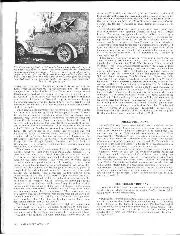
The Things They Say...
"And with a little thought any man would realise that the lounge is not the place in which to work on car engines."—Mr. Justice Baker during recent divorce proceedings.*** "…
A NOVEL AMERICAN AERO ENGINE OPPOSED PISTONS IN NEW RADIAL UNIT
THE opposed-piston design has been used from time to time in the past in automobile engines, but so far the principle has not been applied to aero power units.
An American firm, Dawn Motors, Ltd., of Los .Angeles, however, have recently constructed and tested an engine embodying this idea, and the results have been sufficiently encouraging to induce them to make a second type on the same lines. In the Dawn engine, there is no cylinder head in the ordinary sense of the term, its place being taken by the outer piston in the cylinder barrel. This outer piston is coupled to the crankshaft by rods and cranks, and the two pistons move in opposite directions. The object of the arrangement of this design is to reduce any tendency to roughness in running, a point which is of considerable importance in aircraft engines, especially with machines of metal construction. Economy in fuel is another feature. Theoretically, in an engine of normal design, a certain amount of energy on the firing stroke is lost in the thrust against the main bearings, and in the effort to “blow off the cylinder head.” In the Dawn engine, the energy of the expanding gases is
applied to the pistons which both transmit their effort to, and turn the crankshaft. Another feature of this motor is that there is no
necessity to counterbalance the crankshaft, since the two pistons induce a pull and push action on the crankshaft at the same time, thus giving a balanced inertia of all motion.
Yet another point about the Dawn engine is that there is an appreciable reduction of risk of fire in the air since there are no flaming gases from the exhaust ports, as the exploded mixture burns itself out on the power stroke with the valves closed.
The first experimental unit is a five-cylinder air-cooled radial with bore and stroke dimensions of 105 min. and 95 nun. At 1,300 r.p.rn. it produces 90 h.p., and 110 h.p. is given off at 1,450 r.p.m. It was given a test which covered a period of 700 hours, and according to the manufacturers, no trouble was met with except certain oil leaks from the crankcase due to blow-holes in the casting.
The Dawn concern are now engaged in the construction of a sevencylinder 300 h.p. engine embodying the same principles as are found in. their first type.